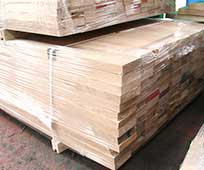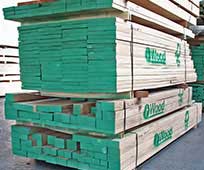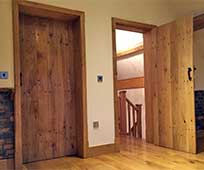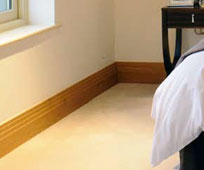European Lightly Steamed Beech - Buy Online
European Beech is used for a wide array of products including furniture, interior joinery and construction. Its ease of working can vary, tending to be fairly easy, and it can be finished to a smooth surface for polishing and staining.

Get prices for European Lightly Steamed Beech
Please note that these images are to illustrate product type only and are not species specific.
European Lightly Steamed Beech Information
Appearance
European beech tends to turn a deep reddish-brown after steam treatment. It is typically straight-grained.
Other Names
English, Danish, French, Slavonian etc beech, according to origin. Fagus Sylvatica Family: Fagaceae
Distribution
Europe, especially central Europe and Britain
The Tree
Beech has been called the mother of the forest, since without it in mixed broad-leaved forests, other hardwood timber trees would have greater difficulties for survival. The rain drip from beech destroys many soil-exhausting weeds, its shade prevents over-evaporation of moisture from the soil, and its heavy crop of leaves provides humus to the soil. In close forest, it can reach a height of 45m with a clear bole of 15m but on average this is usually about 9m with a diameter averaging 1.2m occasionally more.
The Timber
Normally, there is no clear distinction by colour between sapwood and heartwood, the wood being very pale brown when freshly cut, turning reddish-brown on exposure, and deep reddish-brown under the influence of steaming treatment commonly applied in parts of the Continent before shipment. Some logs show an irregular, dark reddish-coloured kern or heart, caused it is believed, by the effect of severe frosts, and occurring more frequently in Continental beech. The wood is typically straight grained, with a fine, even texture, but varying in density and hardness according to the locality of growth. Thus beech from central Europe, notably that from Yugoslavia, and that from Romania is milder and lighter in weight, about 672 kg/m3, than beech from Britain, Denmark and northern Europe, which weighs about 720 kg/m3 when dried.
Drying
Although it dries rapidly and fairly well, beech is moderately refractory, tending to warp, twist, check and split, and shrink considerably. It therefore requires care both in air drying and kiln drying.
Strength
Green beech has general strength properties roughly equal to those of oak, but after drying, most values increase, and beech is stronger than oak in bending strength, stiffness and shear by some 20 per cent, and considerably stronger in resistance to impact loads.
Durability
Perishable.
Working Qualities
Beech varies somewhat in its ease of working and machining according to growth characteristics and dried condition. Thus, fairly tough material, or badly dried stock may tend to bind on the saw, or burn when cross-cut, or, if distorted due to drying, provide difficulties in planning. On the whole, however, it works fairly readily, and is capable of a good smooth surface. Beech turns well, takes glue readily, and takes stains and polish satisfactorily. It produces excellent veneer.
Uses
The uses for beech are innumerable, from furniture, both solid and laminated from veneer, to domestic woodware, shoe heels, toys, bobbins, tool handles, interior joinery, interior construction, and plywood, flooring, turnery. The various types of beech tree used throughout Europe, mainly for decorative purposes are considered to be sports from the purple variety, which in turn was a natural sport from the common beech discovered in a German wood more that a hundred years ago. A sport is a tree that deviates strikingly from the type of its species.







 Main Menu
Main Menu





